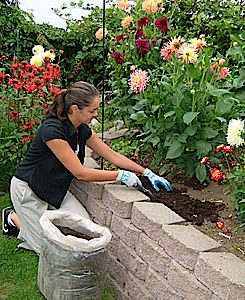I don't know of a word that strikes more fear into amateur gardeners than "pruning". I will admit - although the basics are easy to understand - to become truly professional it takes time, knowledge and practice, and is probably as much an art as a skill. However, that said, it is not rocket science and an important point to note is that bad pruning will very rarely have any lasting detrimental effects on a shrub. It will grow through as you would out of a bad haircut. I will try to touch on a few of the simple essentials in this introduction.
 The two basic elements required are a clear basic understanding of why you are trimming the plant in the first place and at least an elemental appreciation of how the plant will respond to the cuts you are making (this will help with questions like "Is this the right time of year to cut this?"). I am convinced though that there is no substitute for trial and observation - watching how you plant reacts to your efforts can be incredibly informative, sometimes surprising and thankfully, rarely shocking. Again, most plants can be cut at any time of year without damage, but for maximum effectiveness winter or early spring is kindest in most cases unless there is a specific reason to deviate: early spring flowering plants such as Forsythia for example should be left to maximise flowers then pruned after this.
The two basic elements required are a clear basic understanding of why you are trimming the plant in the first place and at least an elemental appreciation of how the plant will respond to the cuts you are making (this will help with questions like "Is this the right time of year to cut this?"). I am convinced though that there is no substitute for trial and observation - watching how you plant reacts to your efforts can be incredibly informative, sometimes surprising and thankfully, rarely shocking. Again, most plants can be cut at any time of year without damage, but for maximum effectiveness winter or early spring is kindest in most cases unless there is a specific reason to deviate: early spring flowering plants such as Forsythia for example should be left to maximise flowers then pruned after this.
Trees and shrubs are pruned or trimmed for one or more of the following reasons: To train or restrict the growth, maintain plant heath or improve the quality of fruits/flowers or foliage. When pruning, probably the simplest to get out of the way first is the health issue - a plant will appreciate having dead or diseased material removed - so do this first by cutting away any part that is obviously dead or in poor health, before moving to ornamental cutting.
A key feature to remember is that by the nature of its biology, a plant builds up hormones just behind a cut, which trigger the new growth shoots to burst out from that region. For this reason it is important to make an even spread of cuts through the plant for good structure and attractive future foliage distribution that has a natural look. Simply shearing through the top of the plant will result in a base void of leaves and a thick unnatural mushroom-like dome on top! Prune lightly all over to increase the density, or cut back more aggressively to restrict the growth. A multitude of books and Internet articles are available on this subject, but above all, do not be afraid to have a go - with the proviso that if you need a saw to make the cut and you are not sure what you are doing you should probably check first with someone that does!
From Riviera Reporter issue 123, Oct/Nov 2007

